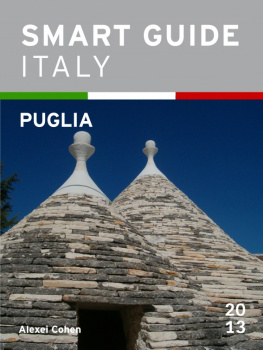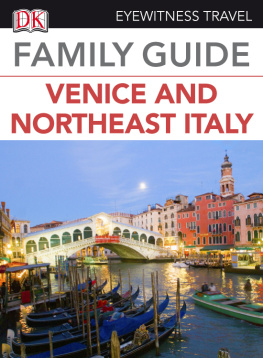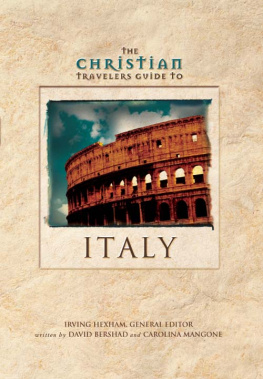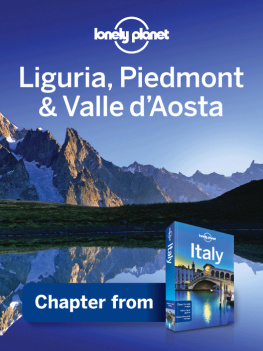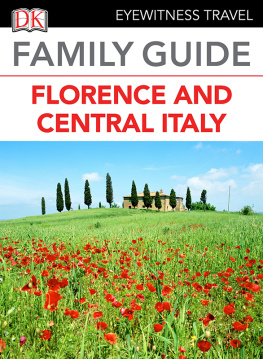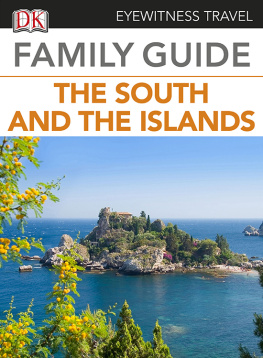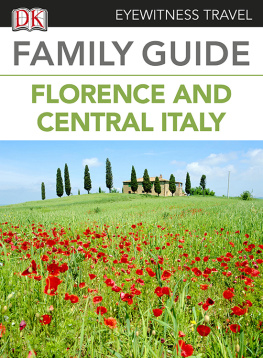Smart Guide Italy: Puglia
Published by Smart Guides
Smashwords Edition
Copyright 2013 Smart GuideItaly
Other titles in the Smart GuideItaly series:
Smashwords Edition,License Notes
This ebook islicensed for your personal enjoyment only. It may not be re-sold orgiven away to other people. If you would like to share this bookwith another person, please purchase an additional copy for eachrecipient. If youre reading this book and did not purchase it, orit was not purchased for your use only, then please returnto Smashwords.com and purchaseyour own copy. Thank you for respecting the hard work of thisauthor.
Smart Accommodation:
Smart Guidehas teamed up with over 5,000 bed & breakfasts, self-cateringapartments and small hotels in order to provide travelers withconvenient, reasonably priced accommodation in the best locationsthroughout Italy. To view all our accommodation options visit our website and choose the one thats right for you. Enjoy thejourney!
Smart Answers:
Travelrequires making choices. If you have any questions regarding yourtrip to Italy and we will get back to you within 24 hours. If you haveany comments or suggestions that will help improve future editionswed love to hear them.
CONTENTS
FOREWORD
Puglia might just be thebest kept secret in Italy. Unlike its more illustrious neighbors tothe north Puglia attracts far fewer visitors than you would expectfrom a region that has it all. That all includes the longest coastline inItaly, an abundance of historic towns and villages, delicious localfoods and some sights you cant see anywhere else. If youvealready been to Italy or even if this is your first time Pugliaoffers a unique experience many travelers miss.
The reason Puglia may not be getting theattention is deserves is distance. Its a long way from Rome,Florence, and the classic destinations travelers generallyassociate with Italy. Puglia on the other hand offers anopportunity to discover a lesser-known side of the country that isequally rewarding and unforgettable. All it takes is an extrahalf-day to arrive from Rome by car or train or even less if youfly into Brindisi. How you arrive isnt as important as justgetting to the region. For once you spend some time in Puglia youwont want to leave.
If you haventalready reserved a place to stay you may want to browse our accommodationoptions .
Smart Guide providesdozens of convenient bed & breakfast, farmhouse and small hoteloffers
throughout the region. Its acozy and convenient way to meet locals, keep your carbonfootprint
low and save.
Enjoy the journey!
Alexei Cohen
Series Editor

INTRODUCING PUGLIA
Puglia has tempted travelerssince the Greeks spotted the rocky coast and decided to plant theircivilization in these parts. The region marks a point between Eastand West where cultures have ebbed and flowed for centuries. Youllhear it in the accents and taste it in the food. Its not youraverage southern outpost. Puglia is well heeled and well offcompared to its neighbors.
The plains androlling hills that run parallel to the sea are covered in olivegroves and vines and it tops the list in extra-virgin production.But this is also where they manufacture fuselages for BoeingDreamliners and locals are as interested in the future as the past.Visitors are attracted by the long coast, trulli houses,and surplus of castles that protect nearly every seasidetown.
Here itspossible to watch the sunrise over the Adriatic and see it set onthe Ionian Sea. In between are Baroque masterpieces like Lecce, blessed with soft, local limestone that has given sculptorsand architects new artistic possibilities, and the fishing villagesof Otranto and Gallipoli which have remained faithful to theirorigins and provide an opportunity to step into a Byzantine andNorman past.
The exchange ofculture is especially present in the regions kitchens, which relyon simplicity rather than over-elaboration. Fish is present onnearly every menu and the durum wheat grown throughout the interioris rolled and cut into dozens of original shapes. Anyone with anappetite can turn the local saying qui paga molto, mangia poco (he who spends much, eats little) into a delicious mantrathat is easy to follow in Puglia.
History
Greek colonists from Laconia and Sparta firstreached the shores of Puglia in the 8th century b.c. They foundedthe cities of Gallipoli, Otranto, and Taranto, where Magna Grecia prospered and managed to overcome fierce resistancefrom native Iapigi tribes who didnt welcome the newcomers withopen arms.
Roman interest in the area beganafter the second Sannitica war when bases were established inLucera and Venosa. Taranto fell in 272 b.c. and began a longdecline as Romans favored the port of Brindisi, which was laterconnected to Rome by the Via Appia and provided a convenient sealink to Macedonia, Greece, Egypt, and Syria.
Christianity began to play arole in the region during the third century a.d. and was firmlyestablished by the time the archangel Michael was spotted on MonteGargano. The fall of the Empire caused less chaos than in otherregions and the real dark ages came during the years of fightingbetween Byzantines and Goths. Lombards and Saracens followed and itwasnt until the Normans arrived that things settled down.
Thanks to the first crusade,many of the coastal cities were revived and received both aneconomic and architectural lift. Frederick II was responsible forbuilding more castles and churches than anyone else and managed tounify the land. Spanish occupation with brief intervals of Austrianand Napoleonic troops led to a steady decline, which the Bourbonshad little interest in reversing.
Things only began to improveafter World War I when the economy began to diversify fromagriculture into heavy industry. Today Puglia remains distinct fromits southern neighbors and can look forward to the future withoptimism.
The Battle of Cannae
In 216 b . c ., hannibal led Carthaginian forces from Spainacross the Alps in an attempt to invade the Italian Peninsula anddestroy Rome once and for all. Although the general ultimatelyfailed to win the Second Punic War, he did manage to win itsgreatest battle. At Cannae he was confronted with eight Romanlegions totaling 90,000 men and had less than half the number oftroops in his ranks. The Romans set their cavalry on the flanks andadvanced with their heavy infantry in deep formations in thecenter. Their plan was to use their numeric advantage to smash theenemy the tried and tested way.
Hannibal, on the contrary, knewhis weakness and positioned his most unreliable troops in thecenter, with Libyan cavalry on either flank. Seasoned troopsremained in the rear and formed a long arc. The center of this lineslowly retreated as the Romans marched over the flat plain thatseparated the two armies into the expanding arc. They advanced sofar that hannibals heavily armed troops on either wing faced theside of Roman legions who were caught between two hostilelines.
The Romans were eventuallyencircled and an estimated 60,00070,000 legionnaires were killedor captured. The battle remains one of the deadliest conflicts overa single day in military history and the greatest defeat everinflicted upon the Romans. The double encirclement, or pincer move,that Hannibal employed was successfully repeated by the Germans onthe Russian front during World War II and is still studiedtoday.
TOP STOPS
Castel del Monte
Pictured on the Italian one-centcoin and named as a World Heritage Site, this gem of a fortress atthe foot of the Le Murge Mountains is one Italys finest castles,with eight towers overlooking hectares of olive groves andvineyards.
Next page
